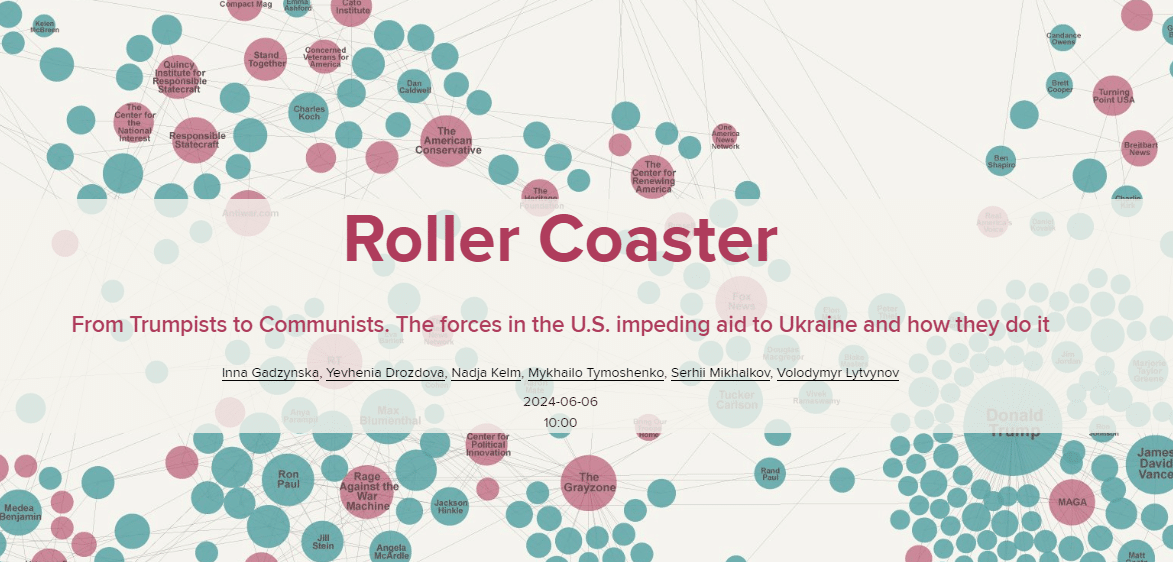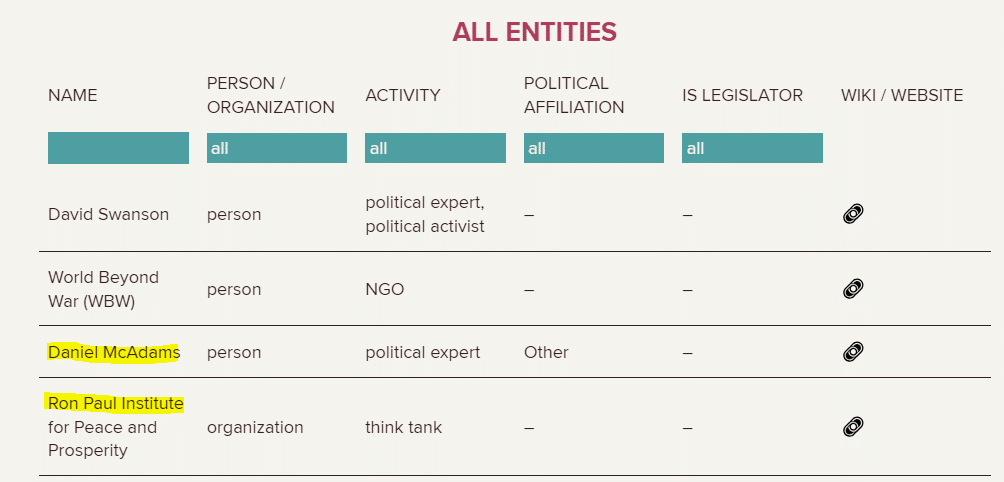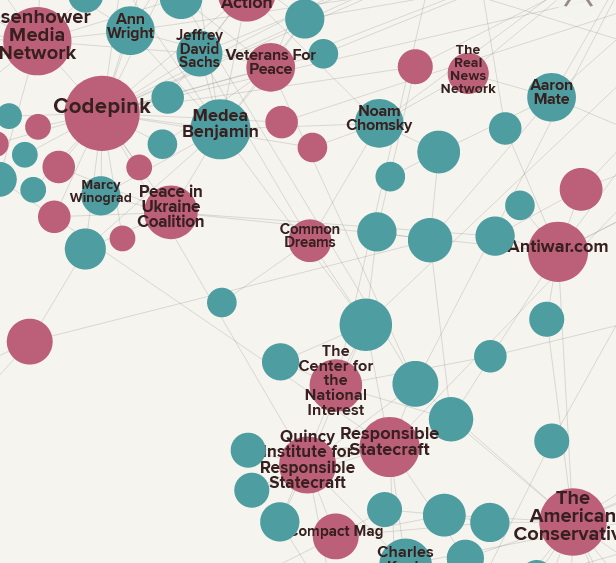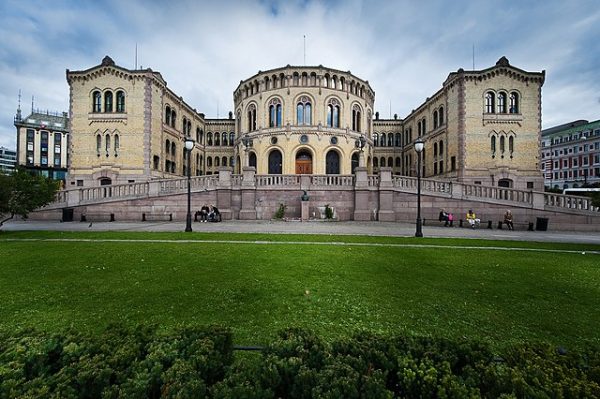“For Us Cubans, Africa is Our Heart, Our Blood”
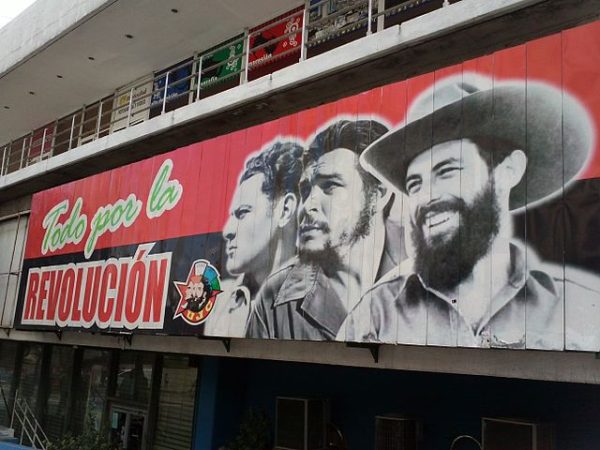
Image by Tumpatumcla~commonswiki, Creative Commons 4.0
Born into a modest family in Sagua la Grande in 1937, Víctor Dreke experienced first-hand the realities of pre-revolutionary Cuba, marked by poverty, racism and discrimination of all kinds. He frequented working-class circles, particularly the sugar industry, which was very present in his native region, and identified with their demands for social justice. At the same time, he became his school’s student representative, voicing the concerns of his generation.
On March 10, 1952, he had just turned fifteen when General Fulgencio Batista orchestrated a coup d’état that shattered the constitutional order and installed a military dictatorship that would last six long years. He discovered the figure of Fidel Castro following the attack on the Moncada barracks in Santiago de Cuba on July 26, 1953, and immediately identified with his cause, defended in his plea/recquisitory known as “History will acquit me”.
With the outbreak of the armed struggle in the Sierra Maestra on December 2, 1956, following the landing of revolutionaries on the island, Víctor Dreke also went underground in the central region of the country. There he met Che Guevara and took part in the final battle at Santa Clara in December 1958.
With the advent of the Cuban Revolution on January 1, 1959, Víctor Dreke was appointed prosecutor of the Revolutionary Tribunals charged with judging the blood crimes committed by the former regime. He also took part in the fight against armed counter-revolutionary groups in the Sierra del Escambray, and confronted the U.S.-organized invasion of the Bay of Pigs.
In 1965, he was asked by senior government officials to organize a group of volunteer fighters to help the guerrillas in the Congo, in the company of Che Guevara. He also led various internationalist missions to Guinea Bissau and Cape Verde at the request of Amilcar Cabral, who was then waging a war of national liberation against Portuguese colonialism. Today, as President of the Cuba-Africa Friendship Association, Víctor Dreke looks back on his history and discusses the links between the Caribbean island and the cradle of humanity.
Salim Lamrani: What memories do you have of your childhood and youth?
Víctor Dreke: I was born on March 10, 1937 in a town called Sagua la Grande in the former province of Las Villas, now called Villa Clara. It was a prosperous area at the time. I’m the youngest of a blended family.
My family was called Castillo Dreke, which was my father’s name. My mother Catalina Mora came from a village called Sierra Morena, near Sagua la Grande. I could have been named Castillo, as one of my brothers was, but my father chose to give me the name Dreke.
I must say that I was a lucky child in the midst of the misery that afflicted the country at the time. My mother Catalina, who gave birth to me, and my adoptive mother Felicia, who raised me, took great care of me. My family was poor, and we lived in a small house with a guano roof on Calle Agramonte no. 30 in Sagua la Grande. I wasn’t a bad kid and I must say I was well educated. I also remember that when I visited my friends at lunchtime and was asked if I’d eaten, I was taught to always answer the same thing – that I’d already eaten and wasn’t hungry, even if it wasn’t true. That was our upbringing.
Like all children my age, I made a few mistakes, but I wasn’t naughty. My full name is Victor Emilio and my childhood friends called me “Emilito”. If I compare myself with today’s kids, I was a kid without much education. I went to a private school that had to be paid for, run by nuns, and I remember that we had to pray on Fridays. However, for family reasons, I wasn’t baptized until I was an adult. I wasn’t a bad student, but I wasn’t brilliant.
SL: Do you remember Fulgencio Batista’s coup d’état on March 10, 1952?
VD: I remember it perfectly, because it was my birthday, my 15th. With a group of young people, we went out into the streets to demonstrate against the coup. We were arrested by the police, who took us to the station before releasing us. I can say that my commitment as an aspiring revolutionary began at that precise date.
My father would go out of his way to explain to me the situation the country was in. He was sympathetic to the Authentic Party of Ramón Grau San Martín and Carlos Prío Socarrás, without being very political. He had previously been linked to the Liberal Party. He was a fish salesman and thought that all politicians were the same, prolix when it came to making electoral promises, but far less inspired when it came to adopting measures for the common good. My older brother Mario was a militant of Eduardo Chibás’ Orthodox Party.
As for me, I didn’t belong to any party. I wasn’t a Marxist. In fact, at the time, I’d heard nothing but negative things about communism. I took part in workers’ strikes in the sugar industry. There were a lot of sugar factories in the province. I was also a student representative at the José Marti Boys’ High School in Sagua la Grande. So, I became politicized in this way, militating with workers and students. I was resolutely opposed to the dictatorship, which murdered opponents and plunged the people into untold misery. I remember the police telling us that black people couldn’t be revolutionaries. I used to tremble with indignation.
SL: How did racism manifest itself in Cuba under Batista’s military regime?
VR: We were discriminated against because of our skin color. We had fewer rights. The same applied to women in relation to men: they suffered the oppression of a patriarchal society.
I became a revolutionary for three fundamental reasons. Firstly, because I was poor and had to fight to provide for my basic needs. Secondly, because I was young, because youth is always rebellious. Finally, because I was black and suffered from racism.
SL: What do you remember of the attack on the Moncada barracks by Fidel Castro and his companions on July 26, 1953?
VD: My revolutionary commitment predates the emergence of Fidel Castro’s July 26 Movement. We were very attached to the figure and ideals of Antonio Guiteras, who had been the soul of the 1933 Revolution and who had been assassinated by Batista. We had a movement called Acción Guiteras and we organized a ceremony in his honor every May 8, the day of his death. Each time, we were repressed by the police and pelted with stones. In those days, my fervor was called Guiteras. We were also followers of Rafael García Bárcena, a philosophy professor opposed to Batista who had founded the Movimiento Nacional Revolucionario.
I didn’t know Fidel. I found out about him during the attack on the Moncada barracks. Fidel’s revolutionary action took place in the centenary year of the birth of José Marti, our national hero. I remember his plea “History will acquit me”, in which he denounced the situation of the country, racial discrimination, illiteracy, misery and injustice of all kinds. I was deeply moved by his undertaking, in which he risked his own life, and by his speech, which was both a plea for his revolutionary action and an indictment of the Batista dictatorship. He pledged to redress all injustices once the Revolution was victorious. I immediately identified with his line. Our generation had finally found its leader.
SL: When did you decide to join the armed struggle after Fidel Castro landed on the island in December 1956?
VD: Within the workers’ movement, there was a tendency in favor of armed struggle led by Victor Bordón Machado, who would later become Commander. I joined this group, which was more in line with my sensibility, and was appointed head of “Action and Sabotage” for the July 26 Movement, initially in 1957, in the Santa Clara area of Escambray. We had few weapons and had to obtain them from the enemy.
Later, as a student, I joined the Directorio Revolucionario and operated in the capital. There were two aspects to the Directorio’s involvement: the clandestine struggle in the cities and the armed struggle in the Sierra.
It should be remembered that most of the revolutionaries, starting with Fidel Castro, came from the university, which was the epicenter of the emancipatory process. There was a subsequent rapprochement between the July 26 Movement and the Directorio. At the end of the war, I was no longer a member of the Directorio but a member of the Revolution.
SL: When did you first meet Che Guevara?
VD: I met Che in October 1958, when he arrived in Escambray. He had come to visit us at the Directorio Headquarters to see Faure Chomón, our commander. He arrived with his legendary column of guerrillas, who were respected by all because they had crossed the whole island on foot at the cost of a titanic effort, following Fidel’s directives.
I remember that, in anticipation of Che’s arrival, we attacked two places: Fomento and Placeta. It was a Sunday in torrential rain. Our aim was to mobilize the army’s attention so that the column could arrive safely in Escambray. I was wounded at Placetas. Our contribution was modest and symbolic, but it was enough to enable Che to carry out his mission.
Che had made a great impression on me. He arrived at the camp where I was, wounded, and I remember he asked me if he could use the typewriter. It made a big impression on us, because our orders were to be at Che’s service. He was very courteous. In Santa Clara, people didn’t really know who this Argentinian was who had come to fight for our cause. We were reliving the story of Máximo Gomez, the Dominican who fought alongside us in the Second War of Independence. It was quite a symbol.
SL: When the Revolution triumphed in 1959, you were appointed prosecutor of the Revolutionary Courts. What was the aim of these institutions, which dispensed expeditious justice?
VD: The aim was to try people who had committed crimes. During the Batista dictatorship, 20,000 Cubans were murdered, often in atrocious conditions, by the tyranny’s henchmen. Our great concern was that the families and friends of these people cowardly murdered, and the relatives of the women who had been raped, should see justice done themselves. We didn’t want the people to lynch these individuals in the streets. There were only two options: either create the revolutionary courts and apply the law, or let the people take care of the criminals. We had experience of what had happened elsewhere, notably in Europe at the end of the Second World War, and we didn’t want extra-judicial executions.
One of the characteristics of our Revolution is that there were no massacres when the military regime fell. There was no revenge. Fidel was very clear on this point, asking the people to trust the courts to deliver justice.
As far as I’m concerned, after taking part in the fighting that led to the capture of Santa Clara, as leader of Squadron 31, I went to Havana to see my family. The Revolution then sought my help as prosecutor for the newly-created Revolutionary Courts. I returned to Santa Clara where, in addition to my role as prosecutor, I was a member of the High Council responsible for analyzing all decisions taken by the Revolutionary Courts, in order to avoid errors and unnecessary sentences. We were particularly attentive to the dignity of the accused. They had the right to a lawyer. They were never mistreated, and we allowed family visits. It wasn’t easy to see a little girl visit her father who had been sentenced to death. But the law had to be applied. We remembered the crimes committed by these same people.
SL: You took part in the fight against the counter-revolutionary groups that sprang up, particularly in the Escambray mountains, following the advent of the Revolution. How did the fight against these individuals unfold?
VD: As early as 1959, there were armed groups supported by the United States who were conspiring against the Revolution. It’s important to remember that the Eisenhower administration supported Batista right up to the very end, by sending him arms. In Escambray, there were armed groups attacking peasants, most of whom were in favor of the Revolution, and teachers involved in the literacy campaign. These men were preparing the ground for the coming invasion. Their aim was to create a bridgehead. The strategic plan was to organize an internal uprising during a future landing to support the invaders. You can’t separate Playa Girón, or the Bay of Pigs, from the Escambray counter-revolutionary struggle.
Fidel Castro, our Commander-in-Chief, therefore took the decision to counter-attack and liquidate these Yankee government-backed groups, which were mainly located in Escambray, but also in the Eastern Province and Pinar del Río. We carried out a major sweep and neutralized most of these groups before the invasion of April 1961. Our State Security apparatus had infiltrated these bandit groups. The struggle lasted until 1965.
SL: In April 1961, the United States and the CIA orchestrated the Bay of Pigs invasion. You personally took part in the fighting. Can you tell us about these events?
VD: Before the invasion of April 1961, there had been sabotage, acts of terrorism such as the explosion of the La Coubre boat in March 1960, which cost the lives of nearly a hundred people, and aerial bombardments from Florida, etc.
On the day of the invasion, I was driving towards Santiago de Cuba. When I arrived in Santa Clara at the headquarters of the Revolutionary Armed Forces, everyone was on a war footing and I was informed that an invasion had taken place: “The Americans have landed!” That was the rumor going around the island at the time. We later learned that they were Cuban renegades in the pay of the United States, not conventional troops. I asked where the landing had taken place and was told “Playa Girón”. I had absolutely no idea of the place. I’d never been there.
I joined the platoon and we headed for Girón. We entered through Yaguaramas. From the very first moments of the invasion, Fidel was in the front line of the fighting. It gave us moral strength. He appeared with his rifle on his shoulder, like all the fighters, and didn’t just give a speech in Havana’s Revolution Square. He was accompanied by other commanders. All the inhabitants of the area rose up against the invaders, while the United States thought that the people would turn against the revolutionary government. Several battalions that had been fighting the bandits in Escambray joined the struggle. In less than 72 hours, the mercenaries were crushed by the people in arms.
SL: You took part in Che Guevara’s guerrilla war in the Congo. How did this project come about?
VD: I had the historic opportunity to take part in guerrilla warfare alongside Che in Africa, in Congo Kinshasa. Joseph Désiré Kabila’s Mouvement de Libération had asked for our help, following the assassination of Patrice Lumumba by the United States and Belgium. He needed to train his staff and send some thirty officers to us for military training. Fidel agreed, but suggested that the Cubans go directly to the area to train the militants under real conditions, while taking part in the fighting against the Mobutu regime. It was the best thing to do for us and for them.
When we arrived in the Congo, we realized that Fidel was right. The geographical characteristics of the country were different from those of Cuba. We realized this during the preparation stage. In Cuba, for example, you could climb a tree to look into the distance and watch for enemy troop movements. In the Congo, this was impossible because of the dense vegetation. It was impossible to see into the distance. We discovered these specificities on the spot.
SL: What was the selection process like?
VD: There were 130 advisors in all. All were volunteers. Fidel, Raúl, Commandant Piñeros and Osmany Cienfuegos put me in charge of preparing the group for departure. My nom de guerre was Roberto for the Cubans. Nobody knew that Che was going to join the group, not even me. I remember that Osmany Cienfuegos came to see me with several photos of Che shaved and made-up by our specialists. He looked nothing like the Che I knew. Osmany said to me: “This is the Commander Ramón you know”. I told him I’d never seen him before in my life. All the commanders knew each other. I was a commander myself. We met regularly for various tasks.
One day, while I was in camp, I was picked up and we went to a house where there were various comrades-in-arms. I was sitting at the table when I saw Osmany approaching with the gentleman in the photo. I stood up, as my father had taught me. He always told me: “You must always stand up to greet people if they have good intentions, and to be able to defend yourself if they approach with hostile intentions”. So, I greeted Commander Ramon, who had a cigar in his mouth. Osmany insisted: “I’m telling you, you know him”. I racked my brains trying to remember who this individual was, without success. Then “Ramon” spoke up and said “Osmany, stop bothering Dreke”. It was only then that I recognized Che.
SL: How did the operations in the Congo go? Che spoke of failure.
VD: The great difficulty we faced was the lack of unity among the country’s revolutionary forces. There were many divisions between the different factions. We decided to form a first company under Tamayo’s leadership, which left for several weeks to carry out combat actions. We then formed a second column under my command. But there were too many difficulties. When we arrived, the enemy had already infiltrated the troops, and the idea was already spreading of seeking a peaceful settlement and abandoning the path of arms.
I don’t share Che’s opinion. For me, the Congo operation was not a failure. We had to adapt to the realities of the country and follow the orders of the Congolese chiefs. Che was not the guerrilla leader. He had to follow the directives of the local leaders. Che was the leader of the Cuban internationalist group. We had no decision-making power. We thought that the Congolese leaders should act as Fidel and Raul had done, with rifle on shoulder, in combat with the troops. In our military doctrine, in our combat philosophy, the leader is always with his troops, on the front line, facing danger and setting an example. But this was not the case in the Congo. Kabila had a different vision of things. Fidel had insisted that we follow the directives of the Congolese and never impose our point of view. We expressed our opinion and let the country’s leaders make the decisions.
Far from being a failure, the Congo operation helped other peoples in struggle to understand how to wage war against colonialism, and what mistakes not to make, whether in Angola or Guinea-Bissau. Our attitude was exemplary, and six of our comrades fell fighting in the Congo. It was an example that will go down in history, particularly in African history. Che is part of African history.
The Congo venture was not a failure. We were able to convince our African brothers that we could conquer freedom through arms.
SL: What does the figure of Che mean to you and to the Cuban people?
VD: Che was a noble soul. We often talk about the guerrilla, but first and foremost he was a noble soul. He was a man of great generosity. You don’t give up what’s dearest to you – your family, your country, your friends, your well-being – if you’re not made of greatness. He was a just man, energetic, firm, an example, who never mistreated anyone, least of all prisoners.
The Cuban people venerate Che even more than when he was alive. Even young people, who never knew him, have great respect for his figure. When you mention his name, you have to discover yourself, in memory of his history and his sacrifice for the cause of the humble.
SL: After the Congo, you headed the military mission to Guinea Bissau and Cape Verde, where Amilcar Cabral led the armed struggle against Portuguese colonialism. Tell us about that experience.
VD: After the Congo, we lent our support to the national liberation struggle of the people of Guinea Bissau. Sékou Touré, the first President of Guinea, played an important role in the decolonization of Africa. He gave us great support during our missions on the continent. We trained the militia in Conakry to prevent a coup d’état against Touré by the Portuguese. Touré was courageous and supportive of Amilcar Cabral.
In Guinea Bissau, the situation was different from that in Congo. After the 1966 Tricontinental Conference in Havana, Amilcar Cabral asked for our help and technical support. He didn’t want the Cubans to take part in the fighting.
Amilcar Cabral was one of the most clear-sighted revolutionary leaders of his time, as demonstrated at the Tricontinental Conference, where he spoke out in favor of armed struggle. He had a solid intellectual training. Jorge Risquet, our man in Africa, had met him in Congo Brazzaville and was impressed by his vision. Risquet offered him men, but Amilcar refused, stressing that he only needed trainers and advisers, as it was up to the Guineans themselves to liberate their own country. “We must make our own revolution”, he said. He wanted to prepare the country’s future by training his people to assume the responsibilities of independence. Amilcar had achieved the feat of uniting his people under the flag of independence, no easy feat, in both Guinea Bissau and Cape Verde, two distinct and non-bordering territories almost 1,000 kilometers apart. His father was Cape Verdean and his mother Guinean. Unfortunately, Amilcar Cabral was assassinated by traitors in the pay of Lisbon, a few months before his homeland gained independence.
SL: What motivates an internationalist to carry out a mission far from his native land, with all the sacrifices that entails?
VD: First and foremost, it’s a call from the heart. When we see the misery, oppression and poverty that strike the most vulnerable, we can’t remain insensitive. Deep down, we feel a moral imperative to act to help these peoples in their struggle for dignity. That’s why, in addition to my military missions, I ran an internationalist school in Cuba. Later, I led construction projects in Africa, in Guinea Bissau, Cape Verde, Mozambique and Angola.
It must be stressed that we have always intervened at the request of the people. We have never imposed our presence on anyone. We went to the Congo at the request of Kabila’s revolutionaries and left the country when they considered that our mission had come to an end. It’s important to remember this. Che did not leave the Congo of his own accord. He didn’t abandon the National Liberation Movement. We left because Kabila asked us to leave the country.
SL: Did you visit Algeria during this period?
VD: I went to Algiers in 1967 and even met President Houari Boumediene. It was our first visit since 1965 and Ben Bella’s departure from power. I remember that Boumediene asked me to convey a message of solidarity to Fidel. We’ve always had great relations with Algeria, especially with Ben Bella. We have great respect for the Algerians. Unity between Cuba and Algeria has been very strong. We can’t forget the ties, particularly during the early years of the Cuban Revolution and the first years of Algerian independence. The 1960s were revolutionary and glorious.
SL: What did you do when you returned to Cuba, and what is your position today?
VD: I joined the Armed Forces in various units. I was head of construction. I founded the Juvenile Labor Army in the eastern region, which was in charge of agricultural production, particularly for crops such as sugar cane and coffee. I was also Head of the Central Political Directorate of the Armed Forces.
Today, I’m President of the Cuba-Africa Friendship Association. For us Cubans, Africa is the symbol of the resistance of a people, a continent, that has been mistreated, bullied and resisted. Today, the peoples of Africa are saying “no” to the powerful, which wasn’t obvious back then, with the exception of a few leaders like Sékou Touré or Ahmed Ben Bella. Our people are descended from enslaved Africans, torn from their homeland to be exploited in America. Our culture is African. How many Africans have died in Cuba? You can’t separate Cuba from Africa. For us Cubans, Africa is our heart, our blood.
SL: Last question: what does Fidel Castro mean to Cubans?
VD: I’ve had two fathers in my life: Dreke Castillo and Fidel Castro. That’s what Fidel means to me. He taught me to have a line of conduct, honor and principles. He taught me that you always have to get up after you’ve fallen. That’s why we’ve been resisting the criminal economic blockade imposed on us by the United States for decades. Fidel taught us to stand our ground when the going gets tough, and to never give up under any circumstances. For this, we can count on the support of the peoples of Africa and beyond.
